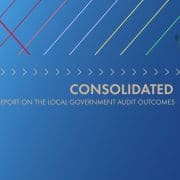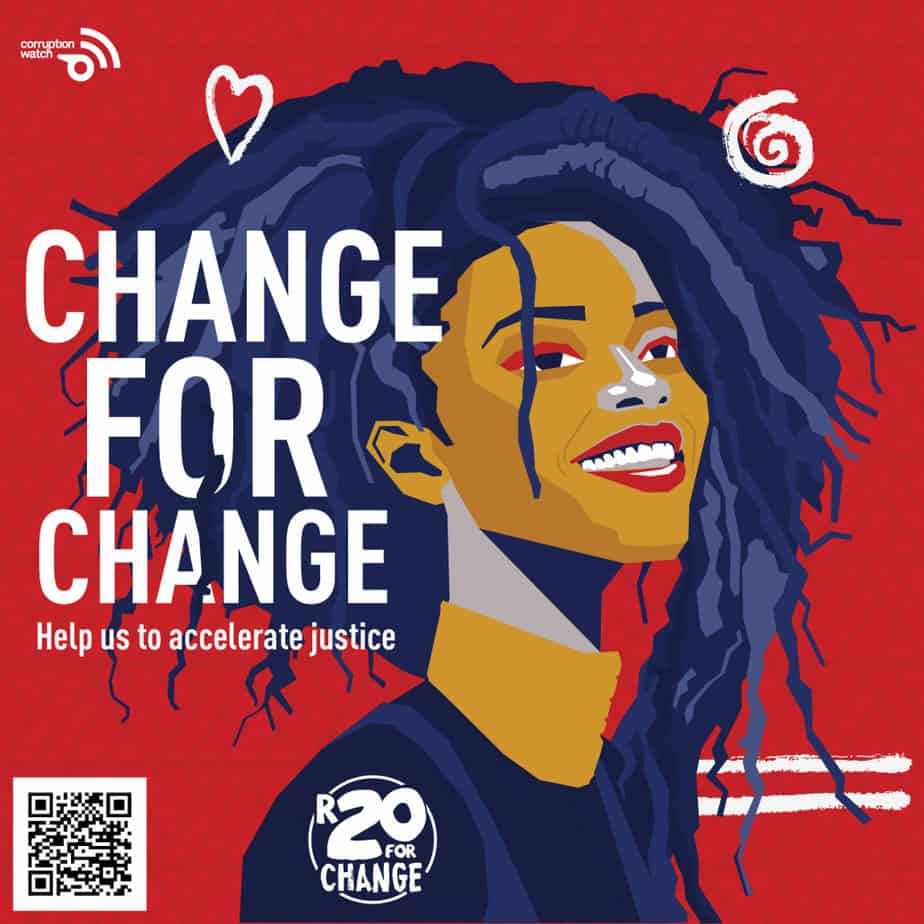|
Getting your Trinity Audio player ready...
|
“The performance of local municipalities in South Africa is the indicator of the country’s heartbeat. Local municipalities are the closest institution to citizens; they reflect in great measure levels of citizen engagement – as recipients but also as contributors. In addition, local government shows, like no other indicator, the health of public institutions at the most atomised level. Local municipalities are universes, where the historic legacy of the country and the current democratic dynamics converge to give a clear picture of the status quo.”
These words are taken from the second edition of the Government Performance Index (GPI), published in April 2019 by Good Governance Africa. The report assesses South Africa’s 213 municipalities, both metro and local, in terms of administration, economic development and service delivery.
This article is part one of our new two-part local government mini-series. In part two we will look at a handful of municipalities that were implicated by our reporters in malfeasance, and connect their performance with the findings of the GPI and other municipal assessment studies.
The first edition of the GPI, released in 2016, assessed 234 municipalities but an amalgamation process has since taken place that reduced the number to 213. “This year, we were able to compare the state of South Africa’s municipalities with our previous index and have found a significant variation in the municipal landscape, and some shifts within the rankings,” said GGA.
In 2016, of the 20 top-performing municipalities, 15 were in the Western Cape, three were in the Northern Cape and two were in the Free State. This year’s GPI is a little more diverse, with 12 of the top 20 in the Western Cape, four in the Northern Cape, two in the Eastern Cape, one in Gauteng, and one in KwaZulu-Natal. Narrowing it down further, nine out of the top 10 municipalities in the country are in the Western Cape, and nine out of the 10 worst are in the Eastern Cape and KwaZulu-Natal.
The independent 2019 GGA study found that of the top 20 best performing municipalities in South Africa, 13 are run by the DA either alone or in a coalition. Of the bottom 20, 16 are ANC-led and the rest feature the IFP.
This is crucial news in a country that goes to the polls for national elections in a matter of days. Voters need information that will guide them on how to vote wisely. The political party funding act, which is signed into law but not yet enforced, would have been invaluable but local government performance on the ground is a good place to start.
Interestingly, Mbizana Municipality, which came in last in 2016, moved up to 206 in 2019. After the 2016 GPI was published, GGA started several developmental initiatives to improve Mbizana, and in March 2019 entered into a memorandum of understanding with the municipality.
Selected findings
The index rated municipalities on three factors – administration, economic development, and service delivery. The categories are subdivided into three, four, and eight indicators respectively, making a total of 15 indicators. It is important to note that this survey is, as GGA puts it, a snapshot of where the municipalities are now, rather than a deep-delving analysis.
Service delivery indicators included access to piped water, electricity, sanitation, regular refuse removal, formal housing vs informal housing, health facilities, police coverage, and access to quality education as measured by the number of residents who have their matric. Administration was measured by municipal capacity, financial soundness and compliance, and economic development was measured by poverty, income, work opportunities, and unemployment rate.
Economic development
In terms of economic development, Mossel Bay in the Western Cape was ahead of the others in the top 20, while Langeberg was number 20. On average, 48.5% of residents in top 20 municipalities earn less than R2 300 per month, compared to 76.1% in the bottom 20.
Although Senqu municipality was named the second-best municipality in the country, it has the highest poverty and unemployment rates of the top 20. It also has the lowest rate for formal housing access out of the top 20.
Better-performing municipalities tend to have larger working-age populations compared to populations under the working age. Also, low-ranking municipalities are more likely to have a larger population under 15 years of age, and a larger household size.
The economic indicator that had the lowest-performance rate in some of the municipalities was unemployment. It is important to note that 11 of the top 20 municipalities have unemployment rates that are significantly below the national average (27.1%), with their unemployment rates at 20% and lower, with the lowest unemployment rate observed in Bergrivier local municipality at 8.5%.
The results showed that among the top 20 municipalities, the most common economic objective was creating access to formal housing, and fighting unemployment was the lowest objective among all municipalities.
Service delivery
Where service delivery is concerned, among the top 20 municipalities, the highest number of people with access to piped water is in Swellendam (86.3%) and the lowest is in Senqu (8.1%) in the Eastern Cape. More people have weekly refuse removal in Prince Albert than anywhere else, and the highest percentage with access to electricity reside in Swartland Municipality. Access to sanitation is also highest in Prince Albert. Senqu, in fact, scored the lowest of the top 20 in three of service delivery indicators, not making it above 20% for water, sanitation and refuse removal. It scored highest (by some way) for access to electricity, with over 90%.
The most common service delivery goal among the top 20 municipalities was providing access to piped water, sufficient sanitation, and electricity. On the other hand, in the bottom 20 municipalities, the data suggests that the most common challenges faced are also access to piped water, sanitation, and electricity.
Administration
When it comes to administration, the survey revealed that only 29 of the 213 municipalities received an unqualified audit from the Auditor-General for meeting financial criteria, while all of them achieved full or partial (the latter applying to only four out of 213) compliance with the National Treasury’s reporting guidelines.
Of the 29 municipalities that received an unqualified audit, 19 were from the Western Cape, seven were from KZN, two from the Eastern Cape and only one from Gauteng.
Of the 213 municipalities, 43,7% had unqualified audits with findings. It was observed that 75% of the 213 municipalities had qualified audits (both with and without findings).
Some local municipalities in rural areas, GGA found, are investing time and resources to ensure they receive clean audits and are compliant with the reporting mechanisms of Treasury.
It is important to note that while such municipalities may not necessarily perform well in the service delivery and economic development clusters due to limited resources, their administrative efforts do not go unnoticed. This assists in improving their ratings in the GPI, as seen with Mbizana local municipality. For example, this is also why an outlier like the Senqu municipality ranked highly despite its known challenges.
Senqu performed extremely well in the administrative cluster and fairly well in the economic development cluster. So although Senqu has challenges with weekly refuse removal and sanitation, the municipality’s administrative and economic development efforts are reflected in its financial soundness, compliance with National Treasury, work opportunities, formal dwellings and access to electricity.
While it is important to note that no single municipality performed excellently across all 15 indicators, the top 20 generally perform well in the administrative, service delivery and economic development clusters.
Managing finances badly
A similar report on municipal performance was recently published by Ratings Afrika. Titled the Municipal Financial Stability Index 2018 (MSFI), it analyses how well (or poorly) the country’s municipalities work with their money, and the effect this has on service delivery.
Ratings Afrika used data from municipal financial statements of municipalities submitted to the National Treasury up to June 2018. Its definition of financial sustainability is “the financial ability to deliver services, develop and maintain the infrastructure required by its residents without unplanned increases in rates and taxes or a reduction in the level of services, and the capacity to absorb financial shocks caused by natural, economic and other adversities without external financial assistance”.
The organisation scored a sample of the top 100 municipalities out of 100 on factors including operational performance, budget practices, management of liabilities, and liquidity position.
Ratings Afrika named the best-performing municipality in the country as Swartland in the Western Cape, with a score of 86. In close second is Senqu in the Eastern Cape, with 85. On the other end of the scale, the worst performing municipality is Modimolle (Nylstroom) in Limpopo at a paltry 2, followed by Matjabeng (Welkom) in the Free State, with just 4.
The organisation also revealed that Western Cape municipalities, with an average score of 63, show the best performance in terms of the financial situation. The Free State fared the worst, with municipalities showing an average score of 17.
The 2018 MFSI also shows that only 23 of the 100 municipalities under scrutiny reported operating profits last year. The remaining 77 made combined operating losses of R13.3-billion.
Don’t miss part two of our local government mini-series, in which we compare the performance of selected municipalities about which we have received corruption reports, to the findings in the GPI and other municipal assessment studies.








